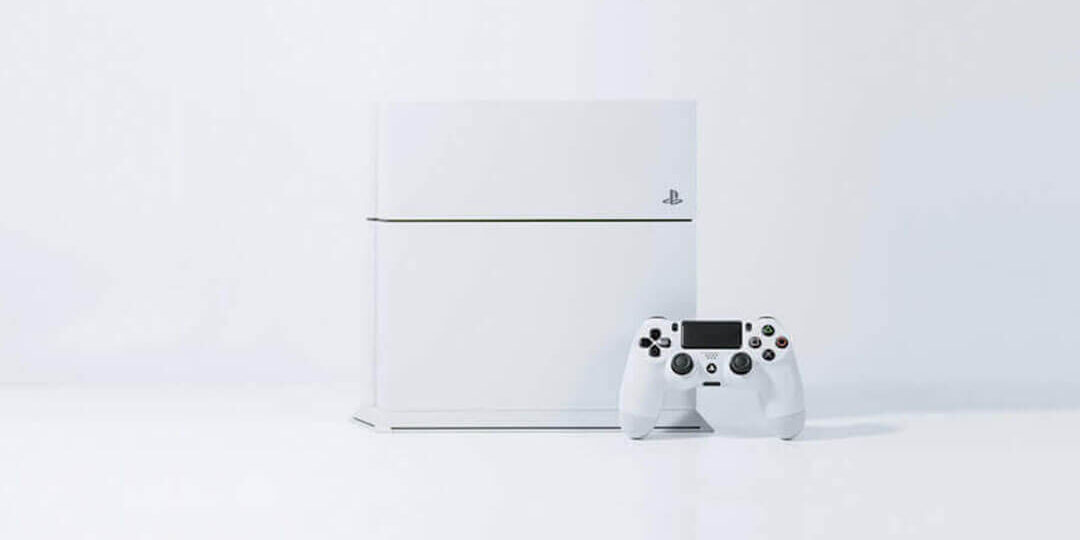Ever dream of waking up, never having to work, all while still getting paid? Continue to dream, because there’s no such thing as real passive income. However, the next closest thing to having a passive income is to have an investment portfolio large enough so that you can withdraw from it and live off it forever without ever running out of money. In this video, I’ll be showing you how you can create a portfolio like this, such as how big should the portfolio be? How does it work?
And what should it consist of? But as always, before I start, do join my 10,000 members Telegram chat group to discuss or ask any questions that you might have.
Whenever we talk about living off an investment portfolio, the first thing we need to know about is something called the safe withdrawal rate. The safe withdrawal rate is a strategy that allows investors to draw down their portfolios while minimizing the risk of running out of money. For example, if your portfolio is constantly growing at 8%, while you are only withdrawing 6% from it every year, your portfolio will never run out of money, because magic.
But of course, this is easier said than done. Because while it’s true that the S&P500 has given around 10% annualized returns in the past, there are times where it has given negative or barely any returns.
So, the danger is that if the withdrawal rate is too high, you will end up drawing down too much and the portfolio will eventually run out of money. So, what’s the safe withdrawal rate then? For this, we can look at a famous study called the Trinity Study.
This study backtested drawing down on different portfolio allocations, and different time periods, across 1926 to 1995 where it encountered many market crashes, different interest rate and inflation environments. And what they found was that if you withdraw 4% or less from a portfolio that consists of 100% US stocks every year for 30 years, there’s a almost a 100% chance that you would never run out of money. This study was later extended to 2024, and they also extended the withdrawal period from 30 to 50 years, and found that with a 3.5% withdrawal rate, you would still have a 98% success rate that your portfolio would never run out of money. Or in other words, if you have invested enough money, assuming you live till 80 years old, you could retire by 30 and never have to work a single day in your life ever again.
Not just that, the terminal value of your portfolio, aka the remaining value after you have passed on, would have grown by quite a lot, even though you aren’t contributing anything to it. And your descendants can continue to live off this portfolio, like magic. Alright, now that we know how much we can withdraw from our portfolio every year, the next step is to find out how big our portfolio should be. This amount is different for everyone depending on which life stage we are in, as well as our spending habits. Like if you live like an otaku who never leaves your room, and spends very little money, you’ll only need a small portfolio size.
But if you go and buy condo, buy car and everyday eat nice food, ah, then your portfolio size might need to be a little bigger ya. But let’s look at a few studies to see what the average expenses should be for a normal person. According to the Minimum Income Standard study, if we are in our 30s or 40s and have 2 kids, we would need around $6,693 a month in order to have a basic standard of living.
This is per household, so if we divide this among the 2 breadwinners, we would need $3,346.50 per person.
Meanwhile, a SingLife survey found that if we are in our 60s, we would need about $2,856 in order to live comfortably. This is pretty close to the number that we got from the OCBC Financial Wellness Index study, where it also found that a retiree would need anywhere from $2,665 to $3,355 in order to have a modest retirement So, using these numbers that we got, we can say that on average, we would need around $2,500 to $3,500 in order to live comfortably. But of course, it’s always good to allocate a little more buffer to our plan.
Because it would be a shame if we didn’t allocate enough, and suddenly ran out of money in our 60s right? So, let’s round this up to $5,000 per month, just to be safe.
So, if we take $5,000 a month, multiplied by 12 months, we get $60,000 a year. And we divide this by the 3.5% safe withdrawal rate, we would get $1.71M. Again, we can round this up to $1.8M for easier calculation. If you are looking for a low cost broker that has a ton of features, while having one of the lowest trading fees, you can check out uSMART.
Unlike most other low cost brokers that just offer stocks and options, uSMART also offers CFDs for stocks, forex, gold, silver. As for the trading fees, for US stocks, uSMART charges zero commission, and the platform fee starts at just USD1. For US options, their fee starts at just USD0.60 per contract with no minimum fee charge. Besides that, they are also the only brokerage in Singapore that lets you enjoy up to a guaranteed 4.6% p.a. return on your SGD and USD cash balance, without needing you to invest the money into money market funds.
With uSMART’s latest Welcome promotion, when you open an account, you’ll immediately enjoy free live pricing for the US and SG markets, a free 0.02 TSLA fractional share. Plus also earn up to USD 180 in cash vouchers, and an extra USD 14 cash voucher when you deposit at least USD 2,000, keep the funds there, while making 3 trades a month for up to 6 months. So if you are interested, you can sign up to uSMART using my link down below. With that being said, let’s get back to the video.
Alright, now that we have our portfolio size, what should we invest in to achieve this? The 3.5% withdrawal rate study was done using a 100% US stocks portfolio. So, in order to achieve the closest result, we should of course start with the S&P500 index fund first. This gives us exposure to the strongest and largest 500 companies in the US, and possibly even the world.
It is well diversified, and best of all, it is self cleansing. Meaning, it constantly kicks out stocks that don’t perform well, and replaces it with better stocks. But given that there are so many S&P500 ETFs out there, which one should we go for? If you are from the US or are investing via a broker that only has access to the US stock market, your best choice would be VOO, as it has the lowest expense ratio of 0.03%.
, while having a slightly higher total net assets than IVV.
However the downside of VOO is that since it’s domiciled in the US, there’ll be a 30% dividend withholding tax whenever you receive dividends. So, if you are using a broker that has access to the UK stock market, you can either invest in either CSPX or the newly launched SPYL, where you’ll get to enjoy a much lower 15% dividend withholding tax. Now, given that the future is uncertain and past returns don’t guarantee future performance, if we only invest in US stocks, we will expose ourselves to geopolitical risk. Because what if one day the US goes bankrupt on its debt?

Or what if it’s attacked by kaijus? Or more realistically, what if the US goes into another super long-lost decade where it goes nowhere for a long time? Then we cannot retire liao lo? That’s why, if we want to increase our success rate, it’s better to diversify globally to avoid relying on the US market entirely.
And one way to diversify is to invest in an all world index fund, that holds the top companies, not just from the US, but from the entire world.
Now of course, by diversifying even more, we would have lower risk, but in exchange, we would get a lower return. For example, while the S&P500 has given almost 13% annualised returns over the past 10 years, the All World Index Fund has only given 9% annualised returns over the same period. That’s more than one fourth of lower returns ya. But according to this study done by Providend, what they found was that during 10 year periods where the S&P500 had given negative returns, the All World Index Fund has given lesser downside, or even positive returns. And as Providend puts it, when investing for enabling non-negotiable life events such as retirement, we need to use an approach that gives us the highest probability of success, which in this case is the All World Index Fund.
So, which fund should we go for? If you are from the US, or only have access to the US market, VT would be your best choice as it has the lowest expense ratio. Otherwise, you can go with either VWRA or the newly launched FWRA to enjoy a lower 15% dividend withholding tax.
Now, for most people, just by having both the S&P500 index fund and the All World Index Fund would be more than enough, but there are 2 downsides with these funds. One, given that they are denominated in the US Dollar, investors will be exposed to currency fluctuation risk.
Which means if USD weakens against the SGD like what happened in 2014, our portfolio value would drop. Two, no matter whether you are investing in US domiciled ETFs or Ireland Domiciled ETFs, there will still be a dividend withholding tax of anywhere between 15% to 30%.
Given that the dividends on these funds range around the 1% to 2% yield, its impact may seem quite small, but over time, this tax may add up. So, in order to reduce these downsides, we can also add Singapore stocks into our portfolio, starting with the 3 biggest Singapore banks, DBS, OCBC and UOB. Now given that interest rates are about to come down soon, you might be concerned that they will start to underperform.
But in reality, this isn’t the case. The banks have proven that they are able to maintain and grow their earnings even during low interest rate environments.
That’s because they have been slowly diversifying their income across various sources like investment banking, wealth management, loans, cards and transaction services, making them less and less reliant on the interest rate environment. As a result, these 3 bank stocks have given some pretty decent returns, as well as growing their dividend payouts over the years. Next, if we want to diversify even further, we can also look to invest into Singapore REITs.
That’s because REITs are required to pay out 90% of their income as dividends. This gives investors a steady bom pi pi dividend income every year. And much like banks, good REITs are able to grow their dividends over the long term, which means the longer you hold the REIT, the higher payout that you’ll receive. As to which REITs you can go for, here are some of my favorites, not financial advice of course.
The first REIT is the Capitaland Integrated Commercial Trust.
This is Singapore’s largest REIT, and has a diversified portfolio consisting of office, retail and integrated development properties. Like your Bugis Junction, Junction 8 and Tampines mall. This REIT currently gives around 4% yield. Second, Capitaland Ascendas REIT, which is also Singapore’s second largest business and insutrial REIT. This REIT has a portfolio of properties in Singapore, US, Australia and UK, and is also currently giving around 4% yield.
Third, Mapletree Industrial Trust, which holds industrial properties, a mix of data centers, business park buildings and so on, and is currently giving around 4.9% yield. But of course, when it comes to investing in individual stocks, you always need to make sure you understand what you are investing in, so that when the stock falls, you won’t be like “Kelvin how ah? Sell now ah?” So, if you are either too lazy to do your research, or have no time, one easy way is to invest in Singapore dividend ETFs.
You won’t buy the wrong stock, if you buy all the stocks. The first ETF is of course, the STI ETF, ticker symbol ES3. This ETF holds the 3 bank stocks, as well as some of the bigger S-REITs I have mentioned earlier. Not just that, it also has a good mix of other sectors as well, such as industrials, telecommunications, consumer discretionary and so on. Though, just take note that, given that many of the holdings are mature companies, they’ll have limited growth and won’t give us fantastic returns.
So, they mostly be for stable dividend incomes, and not so much growth. The other ETF we can look at is the Lion-Phillip S-REIT ETF, ticker symbol CLR.
This ETF gives us exposure into Singapore REITs, and likewise, the benefit of this ETF is that it holds a range of REITs across different industries, so you are a little more diversified. Next, some experts would recommend adding some bond allocation into our portfolio. This would give us stability in order to balance out the market volatility.
But personally, I would just skip this part. Because one, according to the Trinity Study, the more bonds we have in our portfolio, the lower our safe withdrawal rate needs to be, in order to compensate for the lower return. Two, whether you realize it or not, all Singaporeans already have this bond component, and that is through their own CPF.
That’s because under the CPF LIFE, when we turn 65, we would start receiving a monthly payout for as long as we live. What?
For as long as we live. Yes, for as long as we live. The payouts will depend on how much we have saved up in our CPF. For example, if we have achieved the Full Retirement Sum, which is $205,800 as of 2024, we would get a monthly payout of around $1,600 a month. This amount alone would largely cover most of our basic expenses, and the good thing is that for most people, we don’t have to do anything much, since we and our employers are already contributing to our CPF every month.
But if you want, you can also top up $8,000 to your CPF MA or SA every year to achieve FRS a little sooner, while getting tax reliefs in the process. But here’s a question, given that CPF LIFE payouts only start at 65 years old, what about those who have not yet turned 65? Still need bonds ah. Personally, I feel that bonds may be optional for most people, especially if you already have dividend stocks in your portfolio, as they have shown that they are able to give stable dividend payouts through market ups and downs. But with that being said, there are 2 scenarios in which bonds may be useful.
One, you need the money within the next 10 years, and two, you are keeping part of your emergency funds in bonds. In that case, ah, you can check out Singapore Savings Bonds. These are 10 year bonds which you can redeem and get back your money within 1 month, so they are very liquid. Plus, given that interest rates are about to fall soon, SSBs lets you lock in a rather high yield for the next 10 years. Now that we have an idea of what we should add to our portfolio, the next question is, how much should we allocate to each holding?
Again, this mostly depends on your risk tolerance and how much stability you need. For example, if you want higher returns, and are ok with higher volatility. you can go with something like 60% S&P500 index fund, 20% all world index fund, 10% to Singapore banks, and 10% to Singapore REITs. But if you are don’t really need that much return, and you want a little more stability, you can just skip the S&P500 index fund altogether, and go with 50% all world index fund, since it already has about 60% US market in it, then add another 50% Singapore ETFs into your portfolio. This allocation is not fixed, and you can slowly adjust it as you grow older.
Then by the time you reach 65, you will gain an additional income stream via CPF LIFE, so that’s nice. Anyway, that was a quick video on how much money you need to live off your portfolio forever, and the example portfolios that you could invest in to achieve this goal. Hopefully you found it useful. Like share and subscribe as I’ll be posting new videos every Monday, Wednesday and Friday.
https://dash.sparkloop.app/signup?origin=newsletter_radar&aff=290086c5
The Complete Guide to Making Money With Your Autoresponder.
https://reducethehype.com/Downloads/AutoresponderProfitSystem.pdf
Discover more from Making Money Is Easy
Subscribe to get the latest posts sent to your email.



































